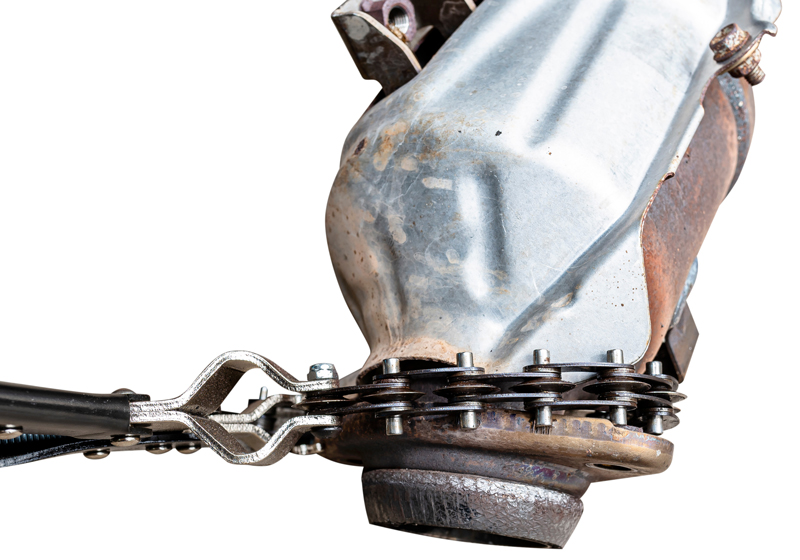BY BOB CRESCENZO
On March 21, Minnesota Governor Tim Walz signed a bill that adds requirements for scrap metal dealers and creates new penalties for unauthorized possession of catalytic converters in the state. This is the latest move by lawmakers across the nation aimed at curtailing the meteoric rise in thefts of catalytic converters in recent years. To date, at least 35 states have passed laws or introduced legislation to help curb what has increasingly become a serious and expensive problem.
 So why is this part so precious to thieves, even on used vehicles? The catalytic converter is a component that turns environmentally hazardous exhaust emitted by the engine into less harmful gases. Various metals in the converter—including platinum, palladium, rhodium, and copper—help remove the pollutants from the vehicles’ emissions, and the skyrocketing value of these metals has driven the surge in catalytic converter theft activity.
So why is this part so precious to thieves, even on used vehicles? The catalytic converter is a component that turns environmentally hazardous exhaust emitted by the engine into less harmful gases. Various metals in the converter—including platinum, palladium, rhodium, and copper—help remove the pollutants from the vehicles’ emissions, and the skyrocketing value of these metals has driven the surge in catalytic converter theft activity.
You’ve probably seen reports on the news about it as this type of theft continues to climb every year, and it can happen anywhere from shopping malls to bus lots. Police say that criminals, often working in rings, can slide under vehicles and brazenly saw off the prized parts using handheld power tools in as little as 90 seconds. Catalytic converters often lack identification details, making it difficult for law enforcement to track down the owners, and the stolen components can be sold for more than $1,000 on the black market. Meanwhile, victims are left with thousands of dollars in replacement and repair bills as vehicles are often significantly damaged in the theft process. To make matters worse, vehicles remain idle until new catalytic converters can be ordered and installed. Thieves tend to target vehicles with a higher ground clearance as the device is easier to access as well as hybrid vehicles where the converter is used less often, making it more valuable, but you should be vigilant with all your fleet.
 While there is no surefire way to prevent catalytic converter theft, there are deterrents to help you protect your investment:
While there is no surefire way to prevent catalytic converter theft, there are deterrents to help you protect your investment:
- Adjust the sensitivity of vehicle security systems, if so equipped, to activate from vibrations, such as those produced by a saw.
- Install motion-sensitive dash cams to notify you of a theft in progress or possibly record the criminals in action.
- Engrave or etch the vehicle identification number (VIN) onto each catalytic converter as many scrapyards are now required by law to check vehicle titles or other documentation before purchasing a used converter; local law enforcement may have information on upcoming no-cost etching events in your area.
- Paint catalytic converters using a high-temperature fluorescent paint to let recycling companies, scrapyards, and police know that the converters have been engraved.
- Install catalytic converter anti-theft devices, such as protective shields, cages, straps, locks, or alarms to make converters more difficult and time-consuming to steal.
- Park vehicles overnight in closed garages or secured, alarmed, and brightly lit yards; when in use, park vehicles close to buildings or in a well-lit and high-traffic areas, and avoid leaving vehicles unattended for long periods of time.
- Park vehicles in the view of surveillance cameras, whenever possible.
- Remain vigilant to strangers who might be casing parked vehicles; report any suspicious activity to law enforcement immediately.
Bob Crescenzo is a Loss Control Consultant for Lancer Insurance Ccompany. He can be reached at bcrescenzo@lancerinsurance.com bcrescenzo@lancerinsurance.com.

